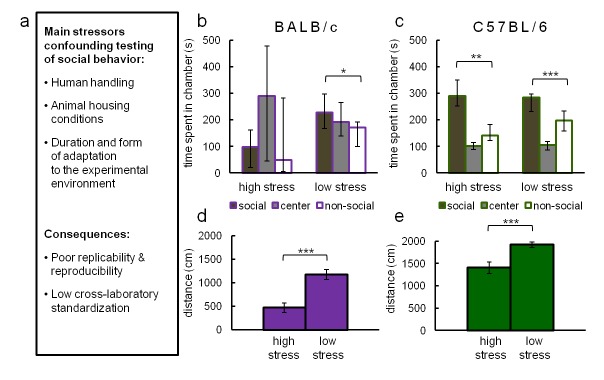Figure 2. Main stressors interfering with reliable measurement of social behavior in rodents (a) and their effects on social preference scores in C57BL/6 and BALB/c mice in the conventional three-chambered test (b–e) under low- and high-stress conditions.
High-stress conditions differ from low-stress conditions in the intensity of light and subjects' and mouse social objects' habituation to the experimenter and the experimental environment (for a detailed protocol see 'Materials and methods'). (b) BALB/c mice showed social preference only in low-stress conditions (n = 17), and they avoided social interactions when tested in a typical experimental setting (n = 11). (c) In contrast, C57BL/6 mice displayed social preference in both stressful (n = 11) and stress-reducing (n = 38) conditions. Social preference was calculated as the time spent in the chamber containing the social object compared to the time spent in the chamber with a non-social object. (d,e) Under stress, both tested strains of mice showed reduced locomotor activity. Data are median values and error bars represent IQR (interquartile range), *p<0.05, **p<0.01, ***p<0.001 (Mann-Whitney U-test).

